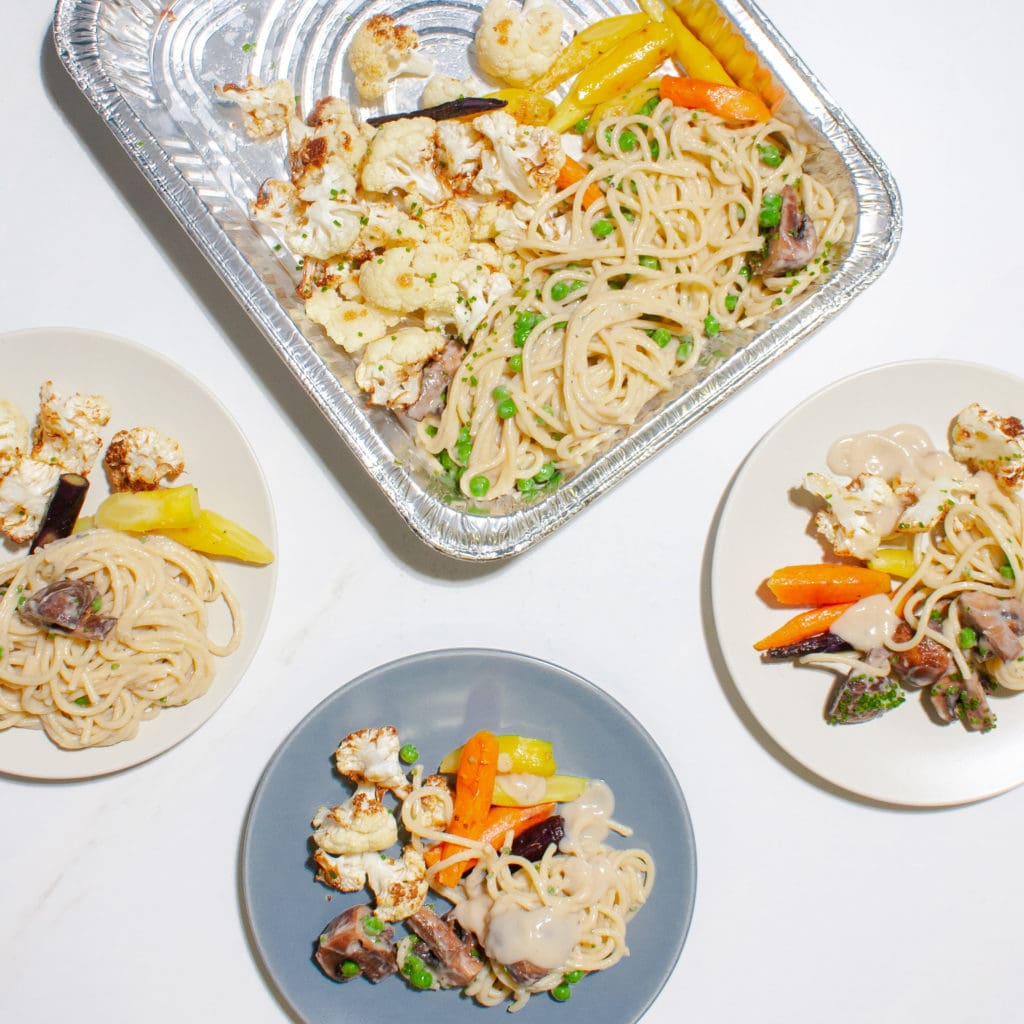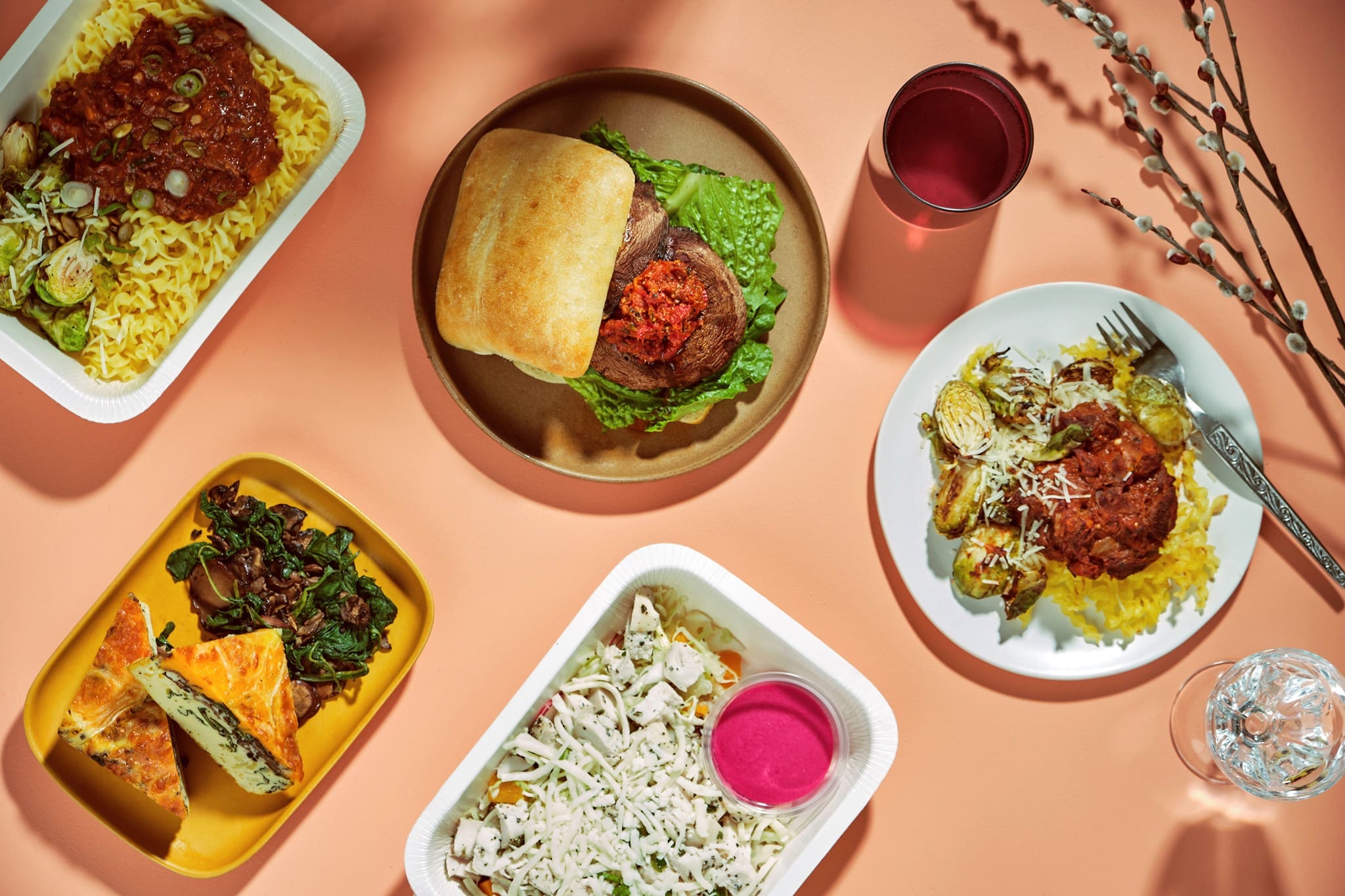It’s hard to believe that September is just a few weeks away, and with back to school looming, we’re chatting with nutritionist and founder of Fed, Saba Marzara, to get some pro tips on how to pack healthy and affordable meals for our kids! —Noa Nichol

Hi Saba! Please tell us a bit about yourself to start.
Hi! My name is Saba, and I’m a nutritionist and business owner based in Vancouver. I studied public health nutrition, and shortly after that worked with the World Health Organization, focusing on nutrition policy initiatives. Following that, I began working at the FAO (Food and Agricultural Organization) on country-level nutrition policies. After years in the global health field, I wanted to work on a different kind of challenge. I got a call from an old friend at UBC who was looking at starting a new venture that would take a science-based approach to food, and he asked if I wanted to help start it. We started Fed about four years ago, and it has been the challenge of a lifetime and one of the most rewarding things I’ve worked on!
We’re all feeling the impact of rising grocery costs. How much more are we paying for food these days, and why?
Statistics Canada reported that groceries have gone up 9.7 per cent. That’s hard for all families to navigate. The rising food costs that we’re seeing right now are being driven by a variety of factors. A few key ones are farmers are paying more for fertilizers and feed, leading to increased costs. As well, processors are paying more to transport food to market due to fuel prices. While these fundamental challenges remain, I think the biggest reason for cost increases is labour availability. It is a major factor in the food industry.
With back to school looming, what are your top tips for packing healthy and affordable meals for kids?
First, do some meal prep! We know weekday schedules can get a bit hectic, so picking one day a week to do meal prep is a great way to help save you time. Use this day to wash/chop fruits and vegetables, and prepare batches of healthy proteins (e.g. chicken, eggs etc). Also, make pre-portioned and pre-packed sides and snacks that are ready to grab in your pantry and fridge when you are in a rush to add a little extra to their lunches. Second, make simple healthy subs. Simple swaps to the daily lunch staples will help improve the health and nutritional value of their lunch. Examples of quick subs include: remove white bread and use whole wheat bread; replace juice with water; and swap deli meat to nitrate-free deli meat. Third, skip the prepackaged snacks. These can sometimes cost more than buying lunch at the cafeteria. Packaged snacks and pre-made lunch products can really kill your budget. Many packaged foods also contain mystery preservatives that aren’t so healthy so staying away from them can also help improve the nutritional composition of their lunches.
Our kid is PICKY! Any advice when it comes to lunch?
Get your kids to help you pack their lunches! Having your kids join in will help give them a sense of decision-making and responsibility over the lunch process, increasing the odds of them eating the foods that are packed, especially if they can be involved in some of the decision making. At the end of the day you want them to pack independently without much help from you, giving you more time to work on other things!
How about foods that help build the immune system, and how to incorporate them into our family’s daily meals as winter and cold/flu season approaches?
Some keys ingredients high in nutrients that can help boost immunity are:
- Almonds: high in vitamin E, a fat-soluble antioxidant that helps protect cells against damage. Almonds are really easy to incorporate into meals, from breakfast (almond spread on toast) to lunch time (sprinkled over your favourite salad).
- Pumpkin seeds: high in zinc, an important mineral for warding off colds and flu. Research has shown that zinc deficiencies can impair your immune system. Add pumpkin seeds to your next trail mix or on top of your favourite peanut butter toast.
- Garlic: contains compounds have been shown to boost the disease-fighting response of some types of white blood cells in the body when they encounter viruses, such as the viruses that cause the common cold or flu. Easily incorporate garlic into your next family dinner from garlic bread to garlic lemon shrimp.
What’s your favourite affordable meal these days?!
I’m not vegan, but I really enjoy eating plant-based meals! With the raising cost of meat products right now it’s also a more budget friendly option. My favourite meal lately is a staple on the Fed menu: our vegan carbonara!

Be the first to comment